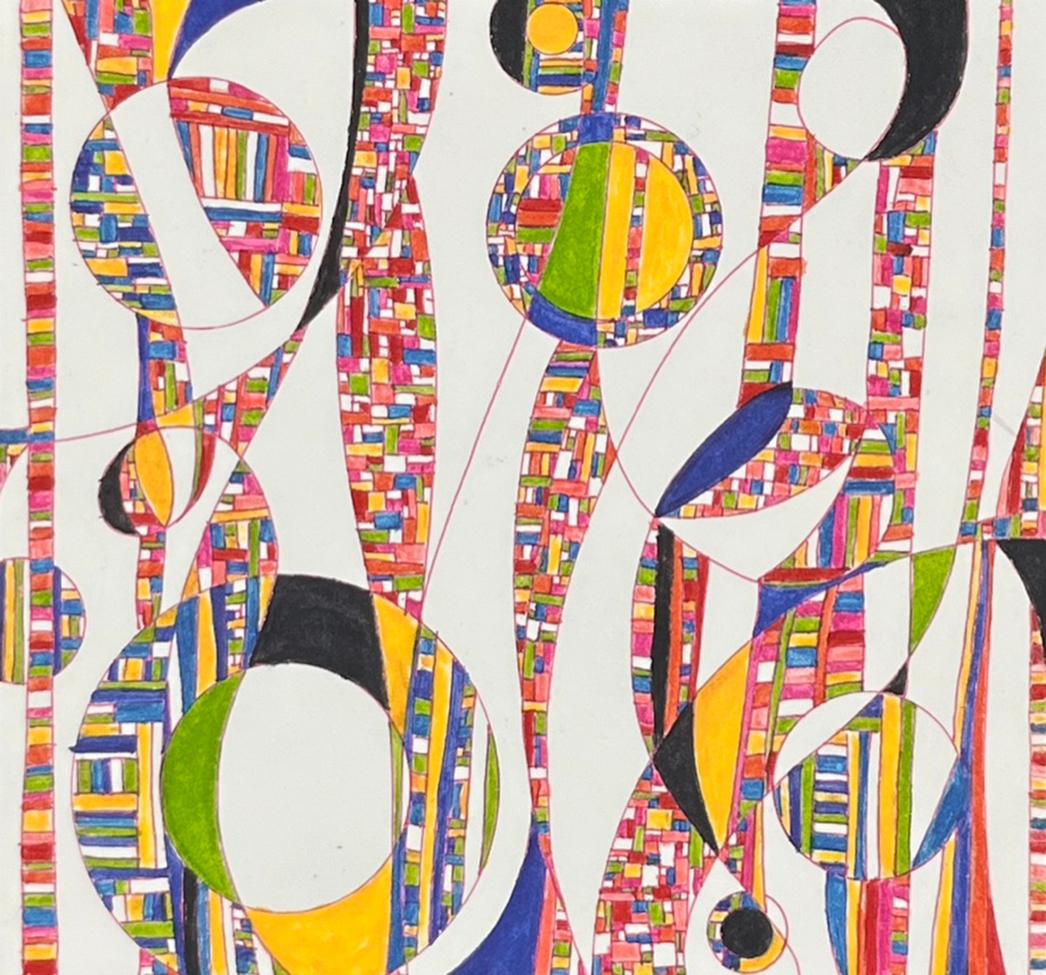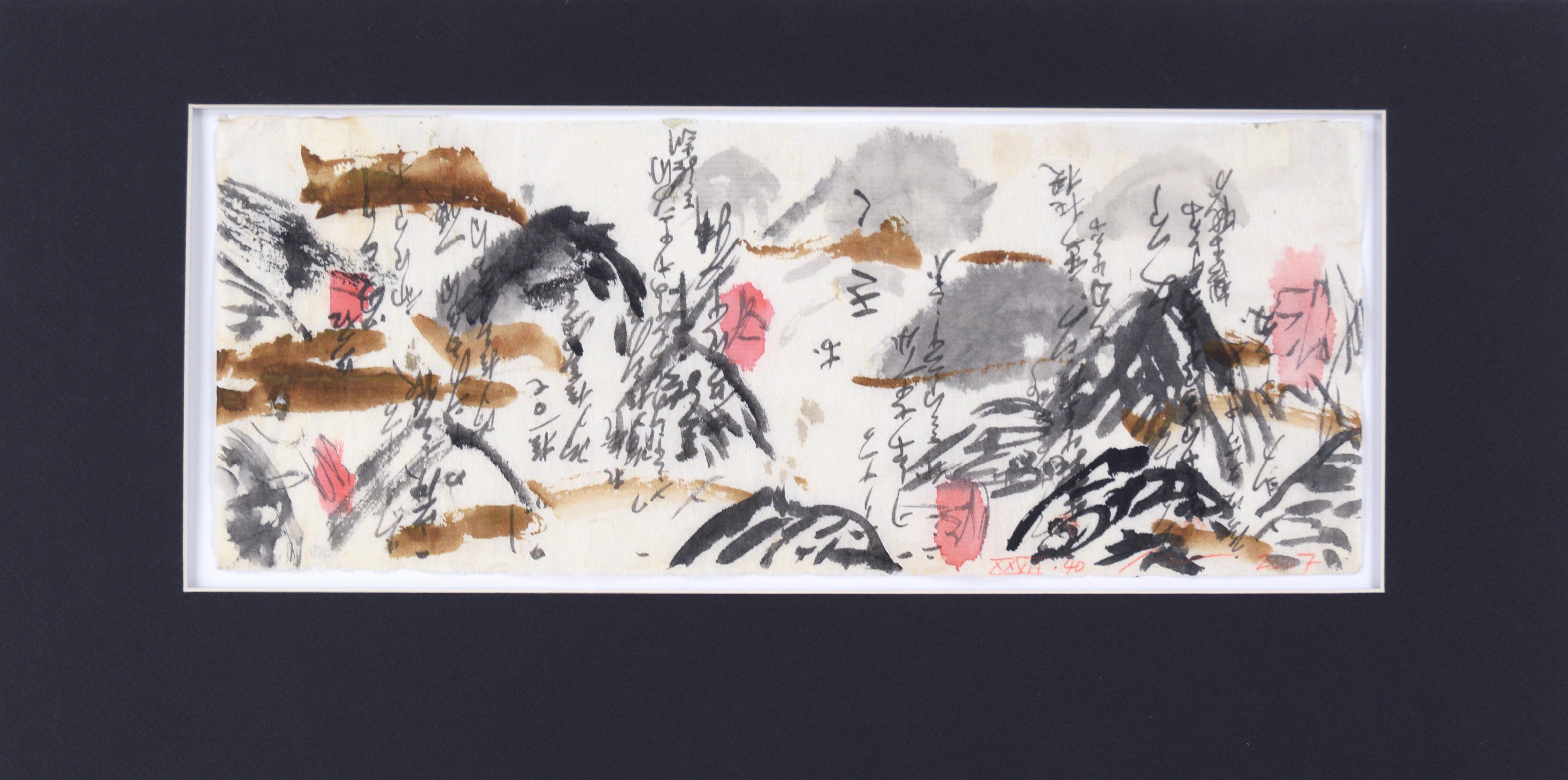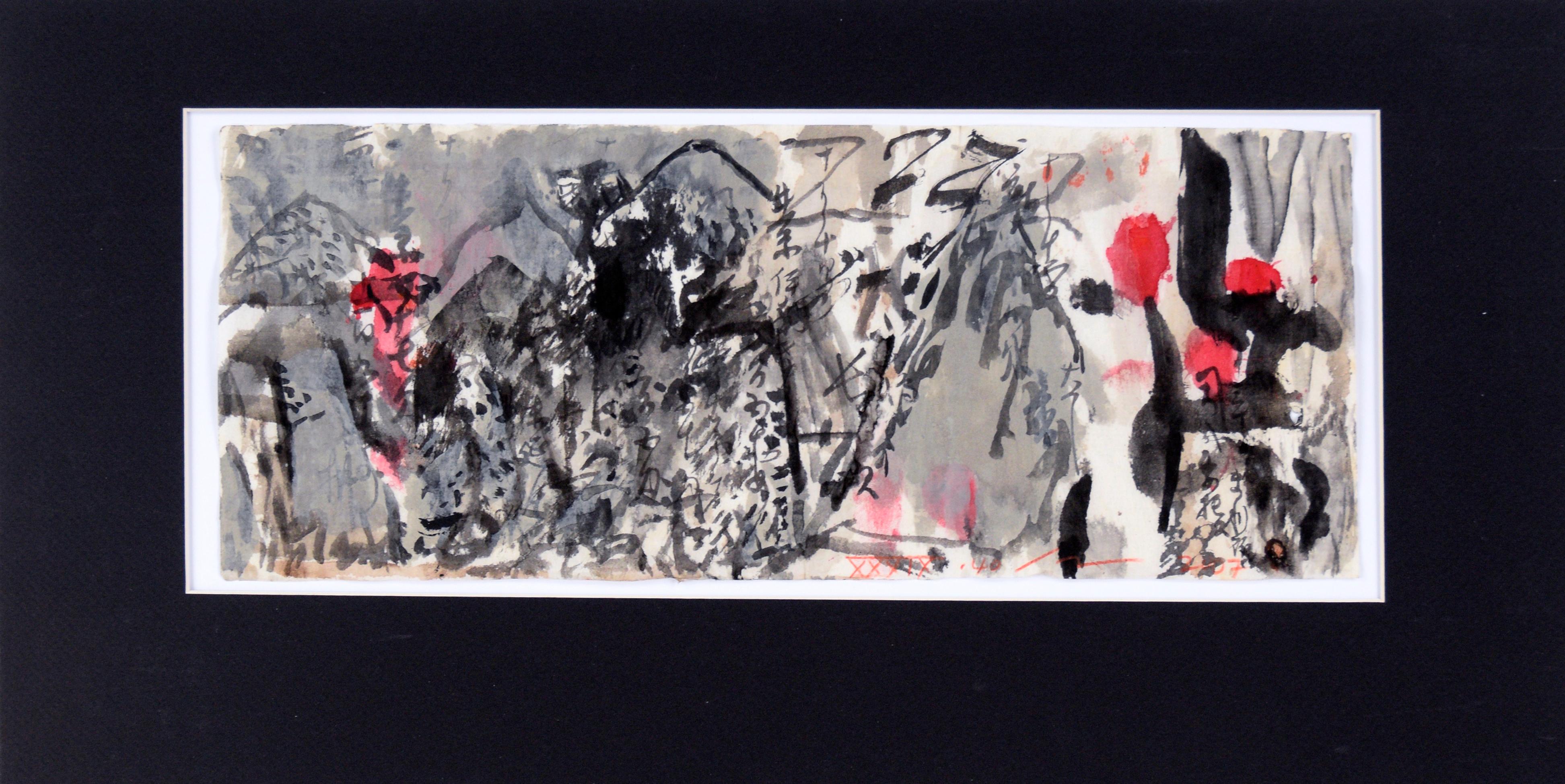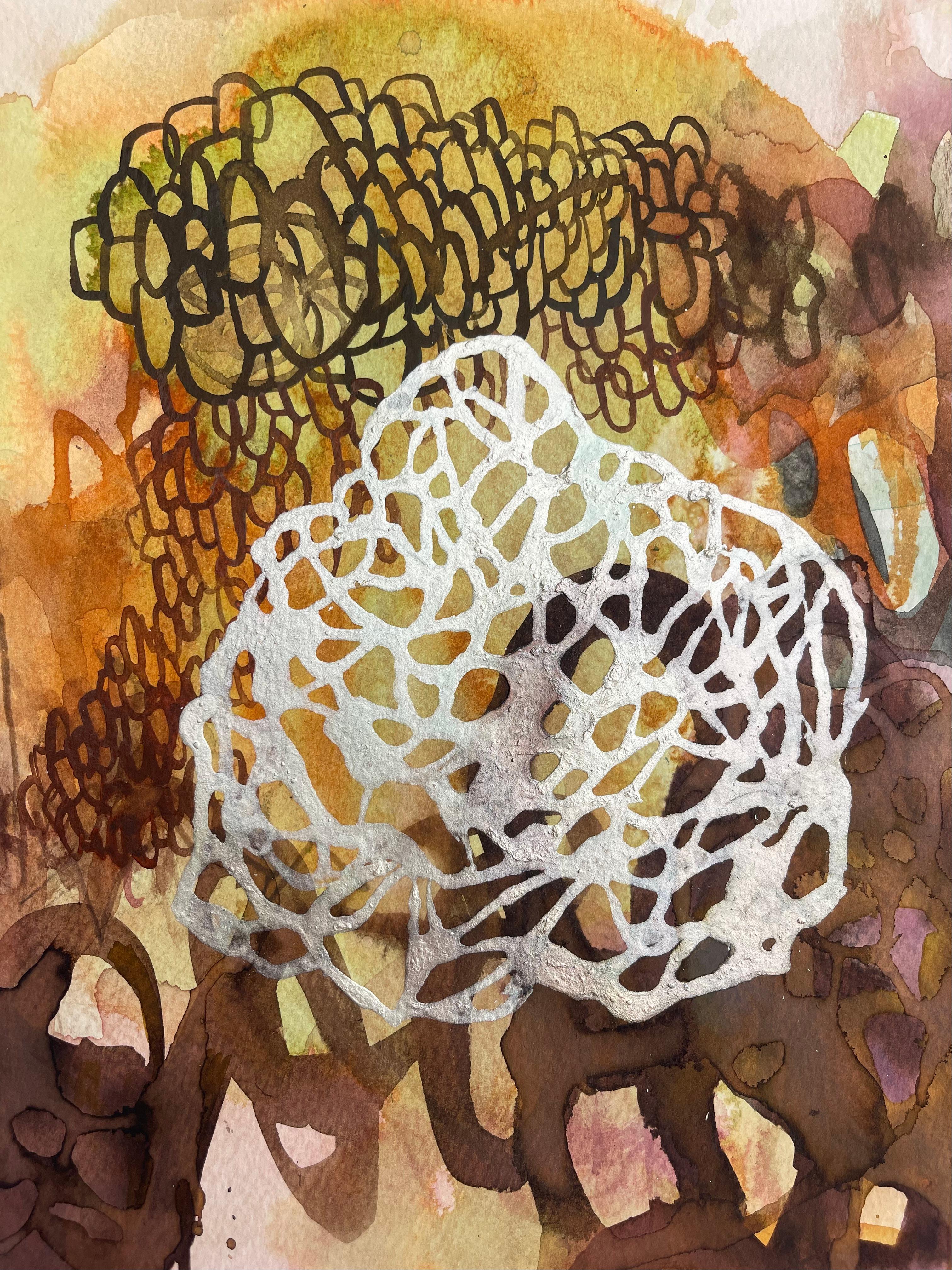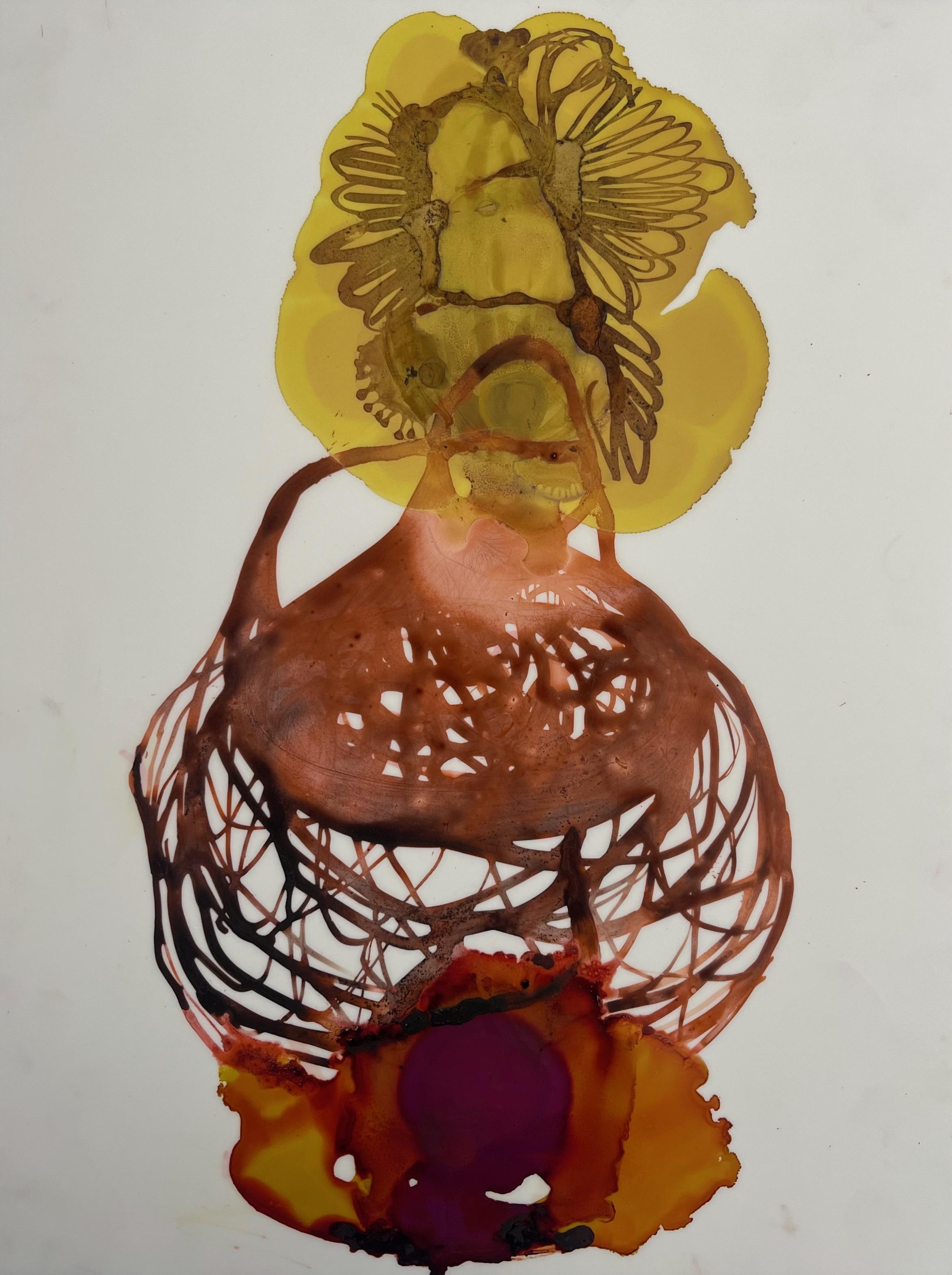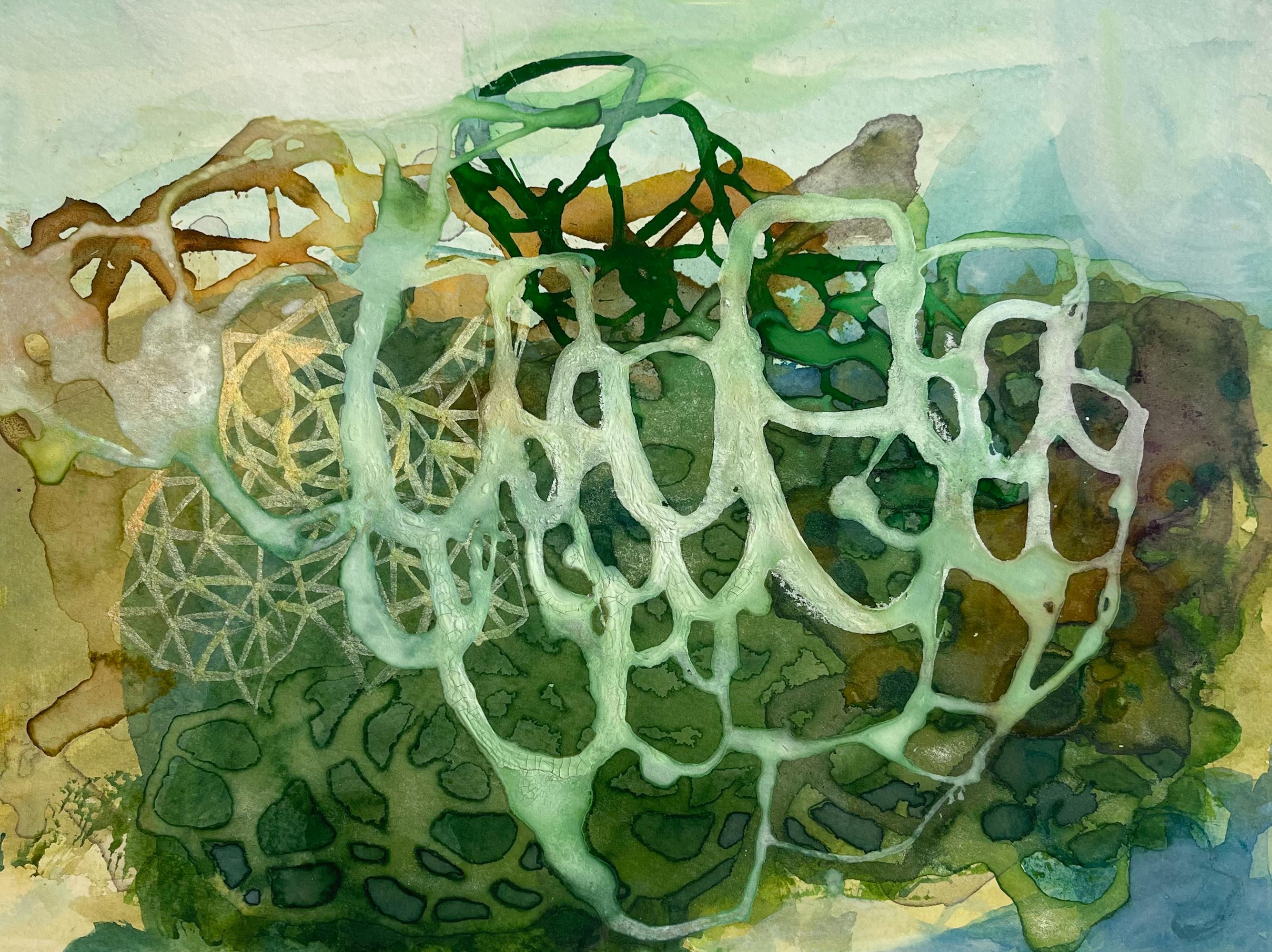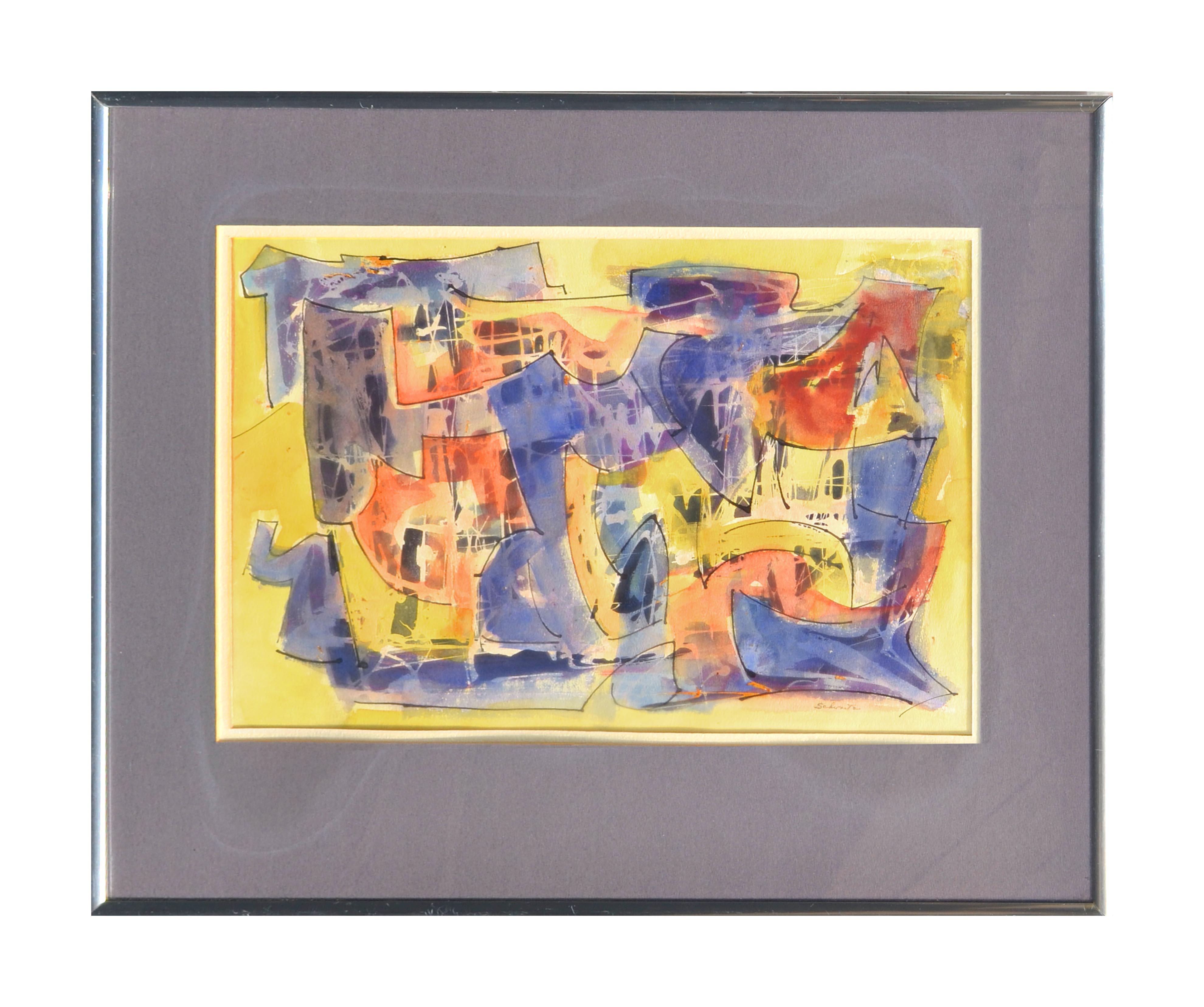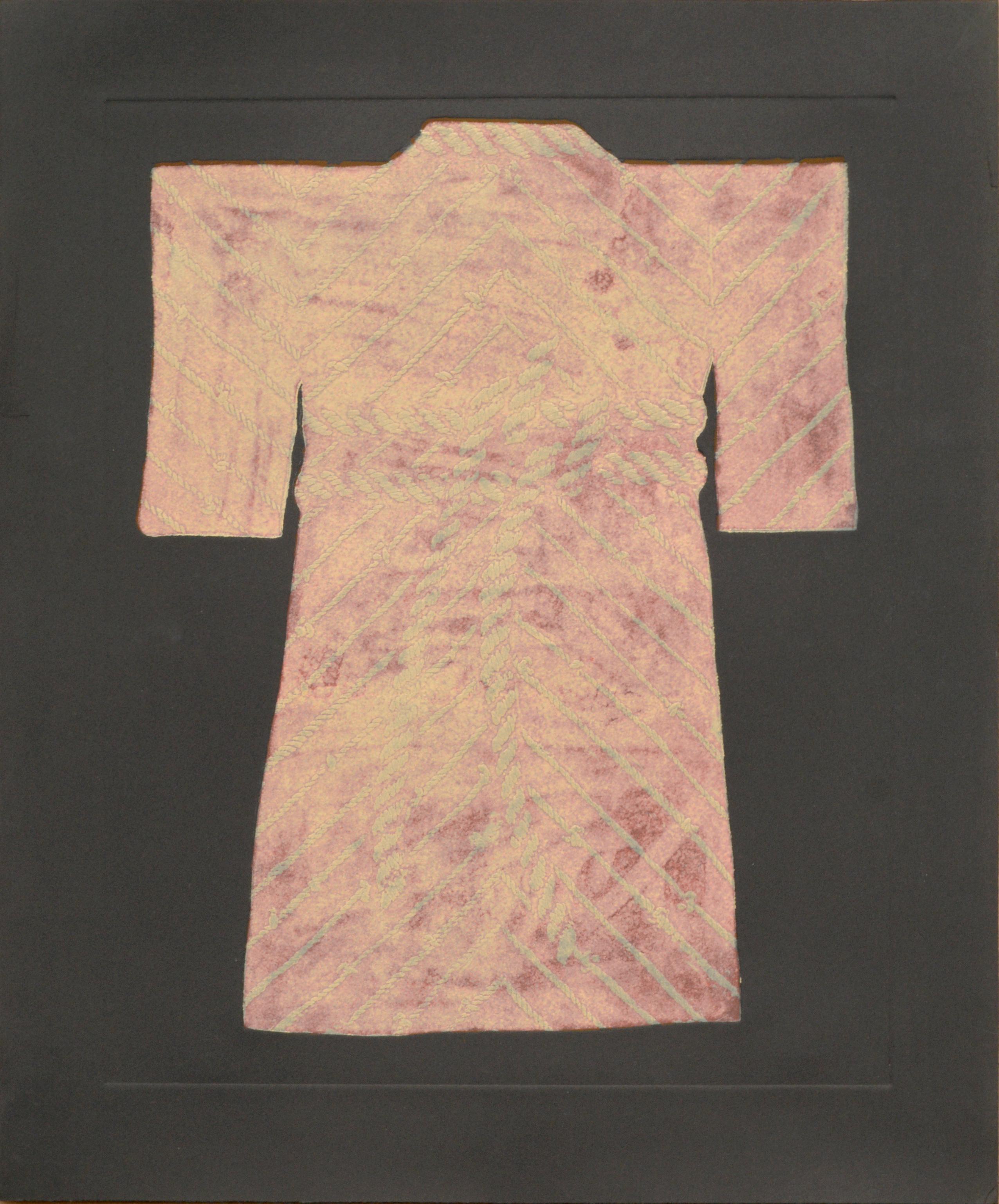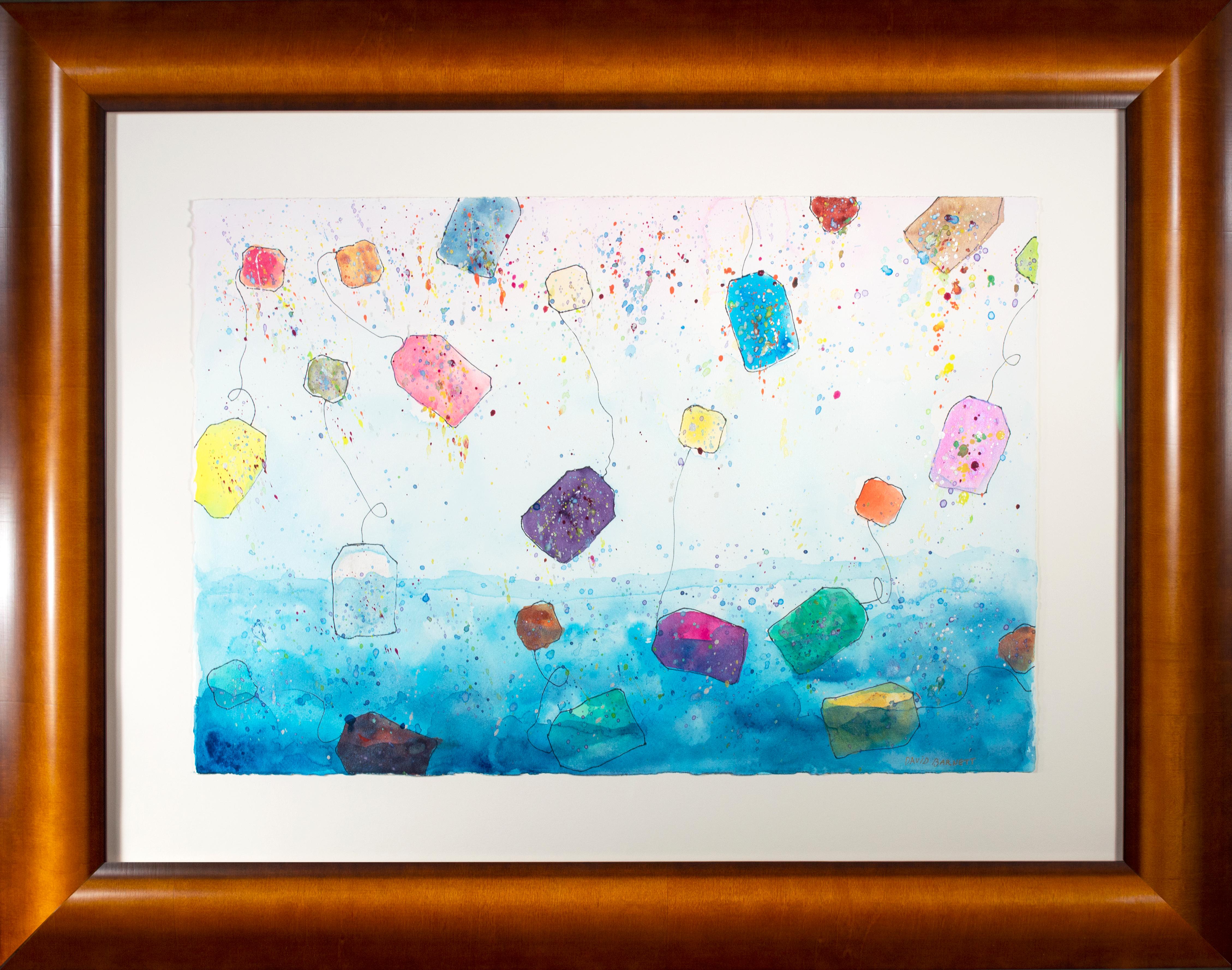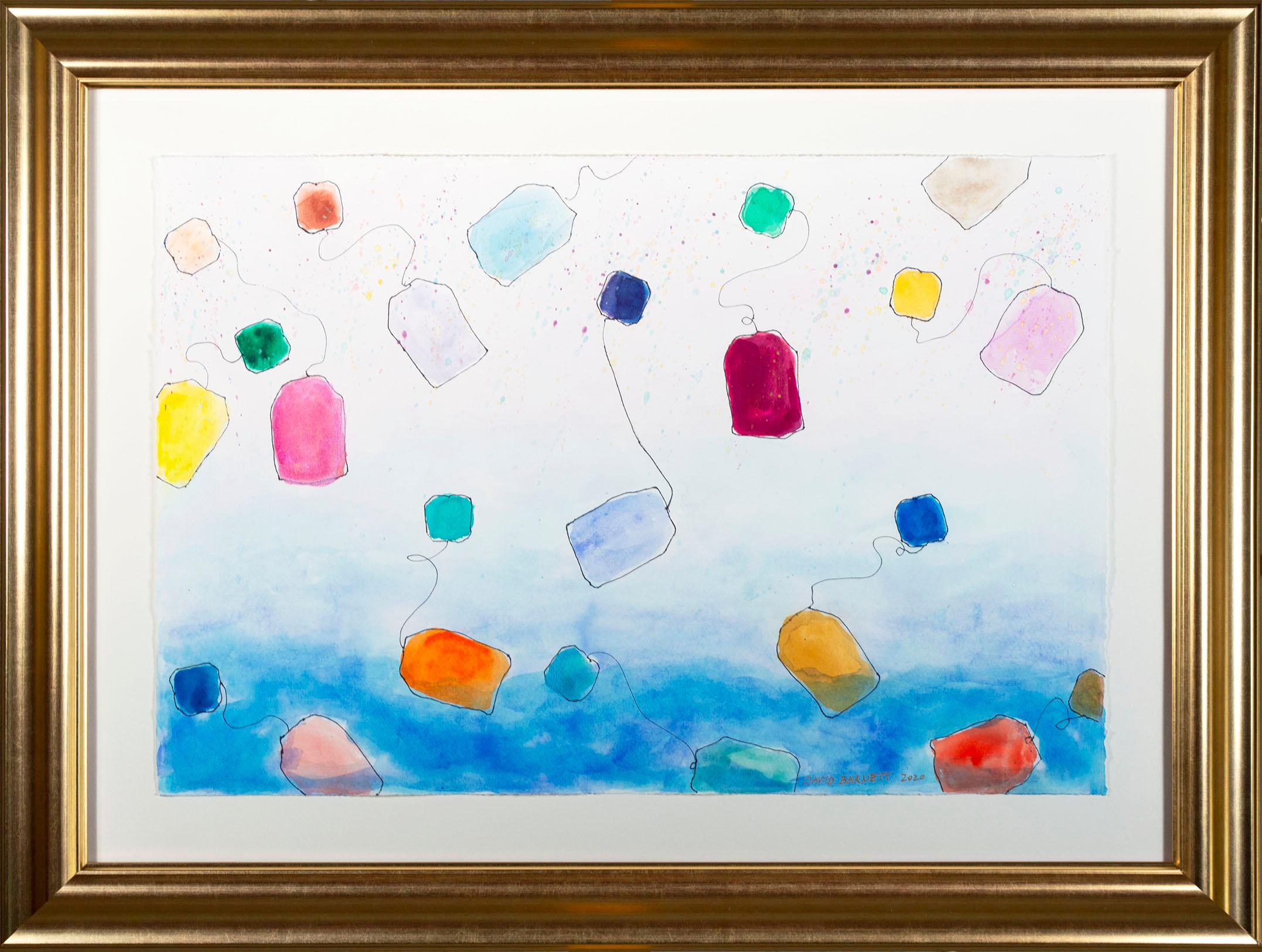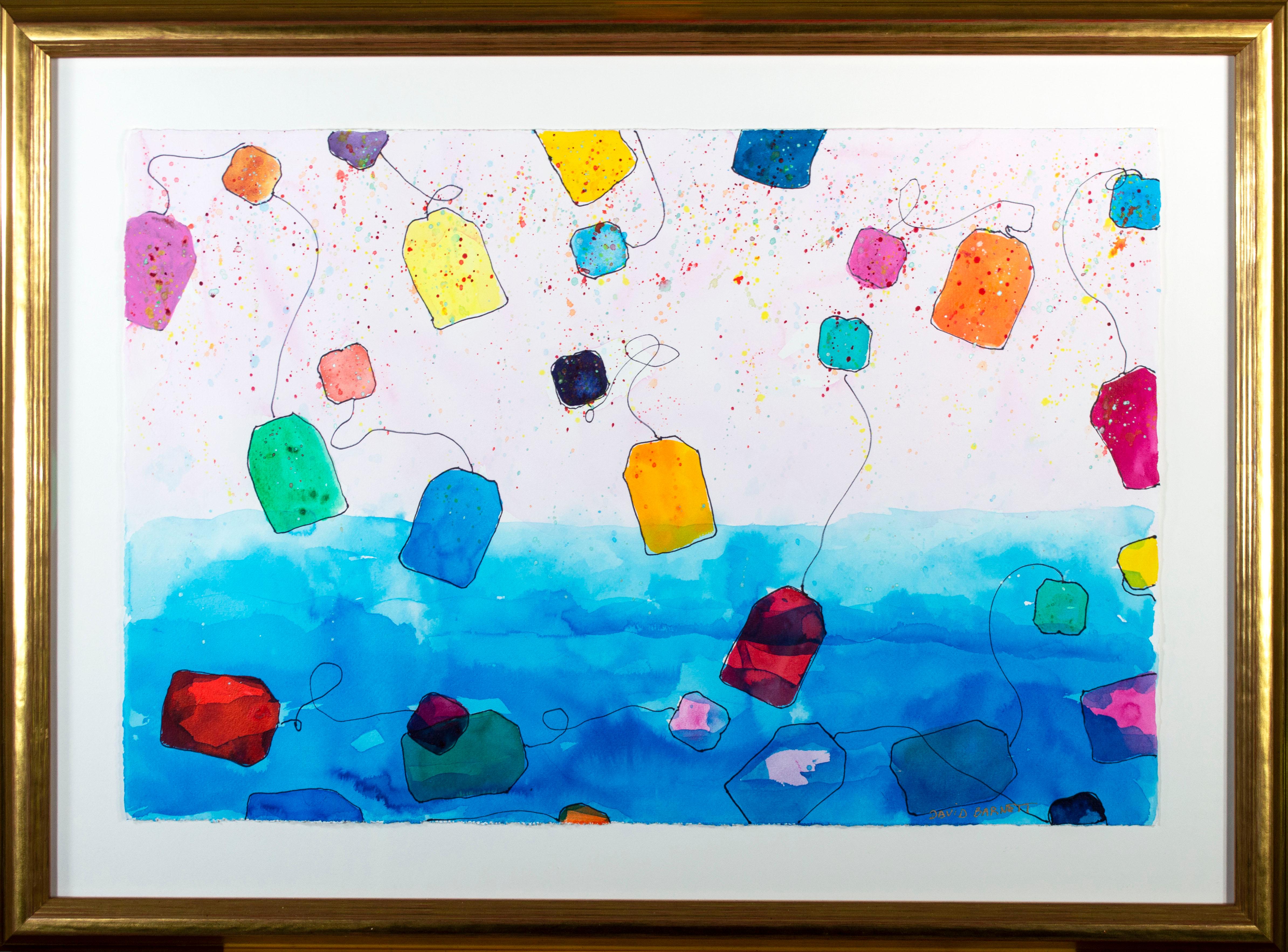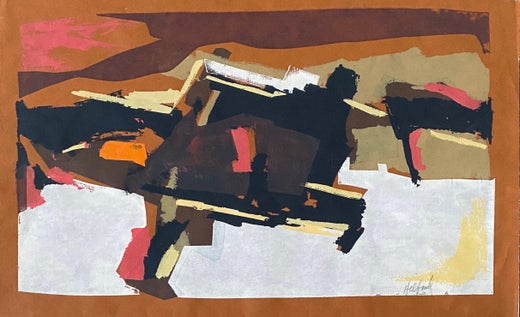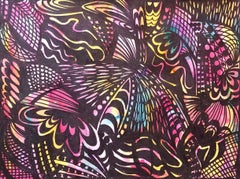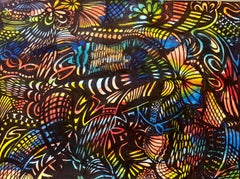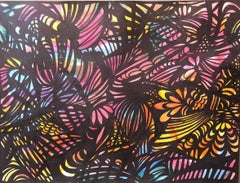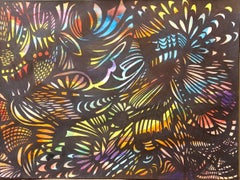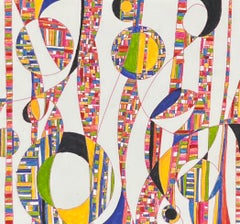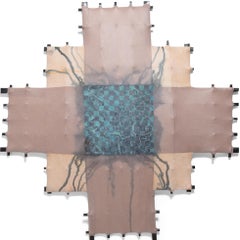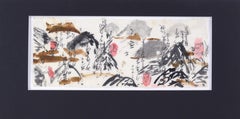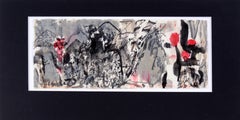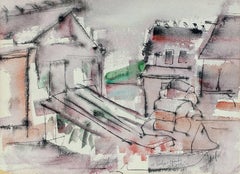
WPA Woman Artist Modernist Abstract Watercolor of Houses
View Similar Items
Riva HelfondWPA Woman Artist Modernist Abstract Watercolor of Houses
About the Item
- Creator:Riva Helfond (1910-2002, American)
- Dimensions:Height: 175 in (444.5 cm)Width: 21.75 in (55.25 cm)
- Medium:
- Period:
- Condition:minor wear to frame commensurate with age and use.
- Gallery Location:Surfside, FL
- Reference Number:1stDibs: LU38211911112
Riva Helfond
Riva Helfond, painter, printmaker and educator, was born in Brooklyn. She studied at the School of Industrial Art and the Art Students League, both in New York. Helfond taught in the WPA/FAP programs in New York from 1936–41 and was on the creative staff of their graphics division. In 1964, she taught printmaking at New York University, and since 1980, has been on the faculty of Union College, Cranford, New Jersey. Her work can be seen in the collections of the California State Museum, Los Angeles; Carnegie Institute, Pittsburgh; Cincinnati Museum; Georgetown University, Washington, D.C.; Metropolitan Museum of Art; Miami Museum of Fine Art; Museum of Modern Art; Library of Congress, Washington, D.C.; Miami Center for Fine Arts; New York Public Library, Print Collection and the Boston Public Library Print Collection. Helfond has exhibited widely and is the recipient of numerous awards, most recently the Society of American Graphic Artists Award for Outstanding Collograph. Her work is included in the Archives of American Art.
More From This Seller
View AllEarly 2000s Abstract Expressionist Abstract Drawings and Watercolors
Paper, Ink, Watercolor, Permanent Marker
Early 2000s Abstract Expressionist Abstract Drawings and Watercolors
Paper, Ink, Watercolor, Permanent Marker
Early 2000s Abstract Expressionist Abstract Drawings and Watercolors
Paper, Ink, Watercolor, Permanent Marker
Early 2000s Abstract Expressionist Abstract Drawings and Watercolors
Paper, Ink, Watercolor, Permanent Marker
Early 2000s Abstract Expressionist Abstract Drawings and Watercolors
Paper, Ink, Watercolor, Permanent Marker
2010s Surrealist Mixed Media
Paper, Ink, Watercolor
You May Also Like
2010s Abstract Geometric Mixed Media
Archival Ink, Watercolor, Gouache, Archival Paper, Pencil, Color Pencil
21st Century and Contemporary Abstract Abstract Paintings
Muslin, Wood, Ink, Watercolor, Rice Paper
21st Century and Contemporary Abstract Abstract Drawings and Watercolors
Ink, Watercolor, Rice Paper
21st Century and Contemporary Abstract Abstract Drawings and Watercolors
Ink, Watercolor, Rice Paper
21st Century and Contemporary Abstract Abstract Drawings and Watercolors
Paper, Ink, Watercolor
21st Century and Contemporary Abstract Abstract Drawings and Watercolors
Paper, Ink, Watercolor
